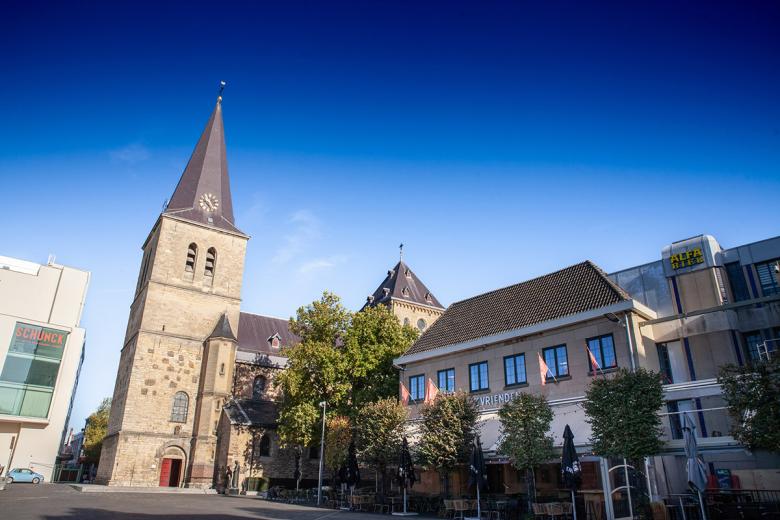New plasmalab enables sustainable future for chemical industry
By opening the Brightsite Plasma Lab on Brightlands Chemelot Campus at 18 November 2021 researchers from Maastricht University and its Brightsite partners will work collaboratively to optimize existing plasma technology and develop new plasma processes. This will make it possible to electrify chemical processes using (green) electricity and to produce hydrogen and raw materials for the chemical industry without releasing any CO2. The creation of the Brightsite Plasmalab is thus a major step toward sustainable, efficient industrial applications for plasma technology within the chemical industry.
What is plasma technology?
Plasma is also referred to as the fourth state of matter, alongside liquid, solid and gas. Subjecting a gas to an electrical field of sufficient strength creates conditions for gas particles to become ionized. This ionized gas consists of gas molecules and reactive particles, such as ions, electrons and radicals. That combination of reactive particles then makes (new) chemical reactions possible. The temperature at the heart of this electrical flame, the heart of the plasma cloud, is extremely high. Under these conditions, molecules can be split and formed very quickly. Due to the fact that a plasma flame is generated using electrical energy, the process is very sustainable when green electricity is used.
Plasma technology as a Game Changer
A major portion of the chemical industry's processes and installations need to be powered by renewable electricity by 2050 if we are to significantly reduce or even eliminate CO2 emissions. Plasma technology is a promising option for making existing chemical processes sustainable. By means of electrification, plasma replaces natural gas as an energy source for chemical processes and is therefore, a very important way in which we can achieve climate goals. Heating to a high temperature using natural gas is replaced by a green, electric plasma flame, producing CO2-free hydrogen. Hydrogen is an important green energy source for fertilizer production. In addition to hydrogen, this process produces green raw materials that can be used in the production of plastics. At the Brightsite Plasmalab, a new generation of researchers and engineers will work with advanced equipment to design and build demonstrators for these new sustainable processes.
As Arnold Stokking, the managing director of Brightsite explains: "Plasma technology has a great future within the chemical industry. We strongly believe it is the best new process technology based on green electricity for splitting and reforming molecules. This technology will play a major role in transitioning chemistry to a sustainable future."
Prof. Gerard van Rooij, Head of Brightsite Plasmalab and Professor of Plasma Chemistry at Maastricht University adds: "By combining the possibilities of plasma with innovative state-of-the-art technologies in our new lab, and by carrying out fundamental research, we expect to achieve significant breakthroughs in sustainability.”
What makes the Brightsite Plasmalab special?
The development of new and efficient plasma processes will pave the way to a circular chemical industry free of CO2 emissions. This is achieved by working with three 'generations of technologies' in parallel, which can be used in applications ranging from laboratories to factories. Feasibility studies will be carried out in the plasmalab, leading to pilot-scale designs. Existing processes will be improved and tested. Finally, fundamental research will be carried out into entirely new processes, which will also be scaled up to commercial applications in the plants and factories. At Brightsite Plasmalab on the Brightlands Chemelot Campus, researchers and engineers will be able to carry out high-pressure, high-power experiments. The location of the lab and the safety awareness and expertise available at Brightlands Chemelot Campus, will allow researchers to safely conduct the experiments that are needed in order to be able to scale up plasma technology to industrial levels.
Pioneering research and scaling up to the chemical industry
The Brightsite Plasmalab is an initiative of Brightsite, Maastricht University (UM) and Brightlands Chemelot Campus. The plasmalab will become a place for Brightsite partners UM, TNO and Sitech Services, together with students and businesses, to optimize existing plasma technology and develop new plasma processes that are applicable and scalable for the chemical industry.
As Prof. Thomas Cleij, Dean of the Faculty of Science and Engineering at Maastricht University explains: "We are aiming to bring plasma into everyday life. I am very pleased that we are part of this energy and circular transition in the Netherlands. The plasmalab is an important 'enabler' of this process."
This academic year also saw the launch of UM's bachelor's degree program in Circular Engineering. Students will be able to apply what they learn in the lecture hall directly to the experiments carried out in the plasmalab. Both fundamental and applied research will be carried out in the Brightsite Plasmalab, and interested companies will be able to join various academic and industrial programs. The plasmalab is expected to attract new parties to the campus.
Bert Kip, CEO Brightlands Chemelot Campus: "We are proud to once again be taking an important step toward a sustainable and circular future, bringing us closer to our aim of a Chemelot Circular Hub. This new plasmalab at Brightlands Chemelot Campus is an important link in electrifying essential circular chemical processes."
Also read
-
Municipality of Heerlen, Parkstad Urban Region and UM invest 6 million in collaboration
Heerlen grants a one-time contribution of €1,478,050 to Maastricht University as part of the Regio Deal application ‘Fundament onder UM-onderwijs in Heerlen’. This amount comes from the Fonds Economische Structuurversterking (FES). The funding will help establish university education facilities in...

-
Dutch Research Council rewards three Maastricht research proposals
The Dutch Research Council (NOW) has decided that within the so-called ENW Open competition XS research programme, 28 projects will receive funding. Three of those projects are headed by a UM scientist.

-
NWO grant for UM research into deep learning
Guangzhi Tang, Assistant Professor, Faculty of Science and Engineering, Department of Advanced Computing Sciences van de Universiteit Maastricht receives a grant for his project Brain-inspired MatMul-free Deep Learning for Sustainable AI on Neuromorphic
